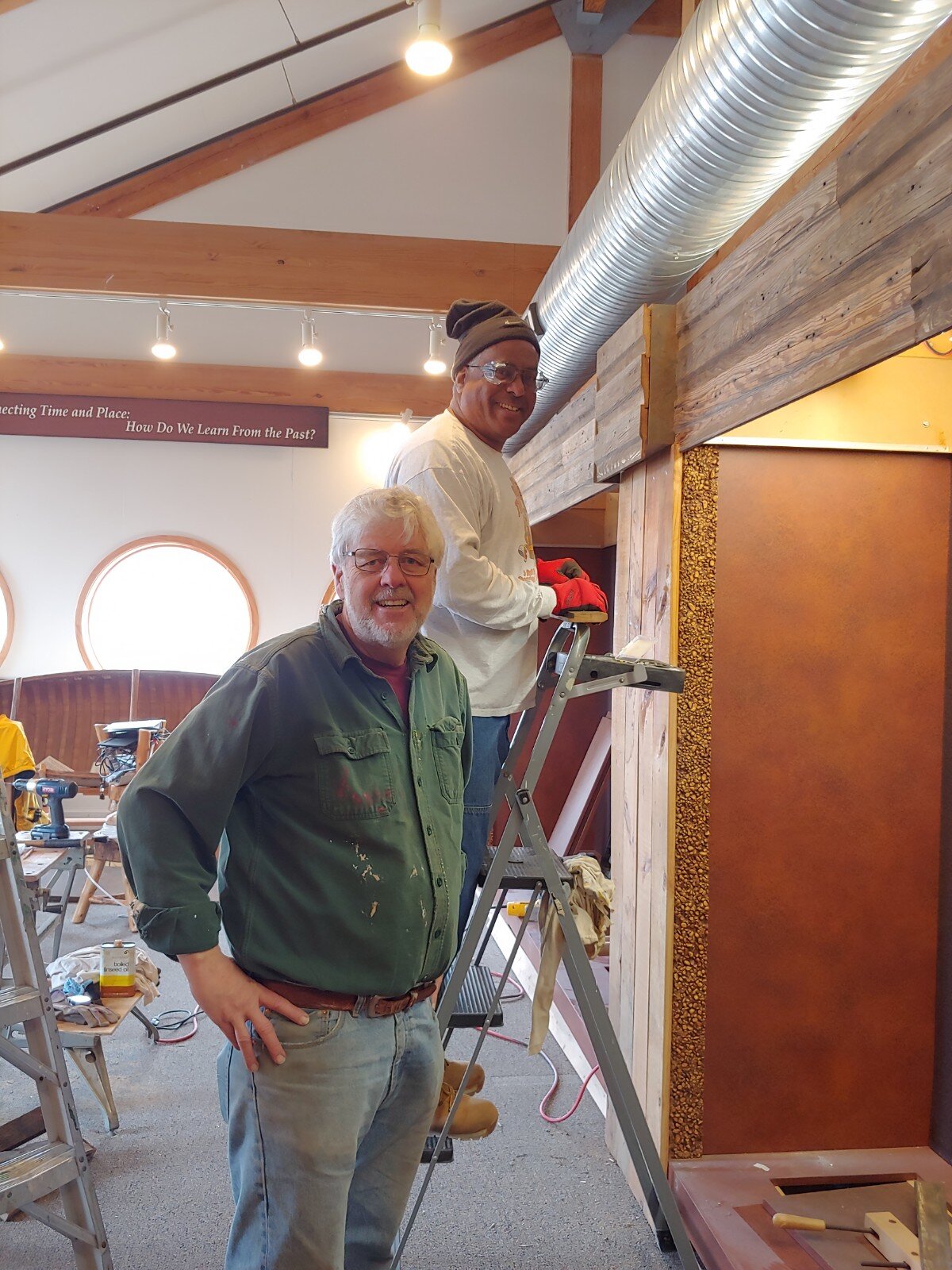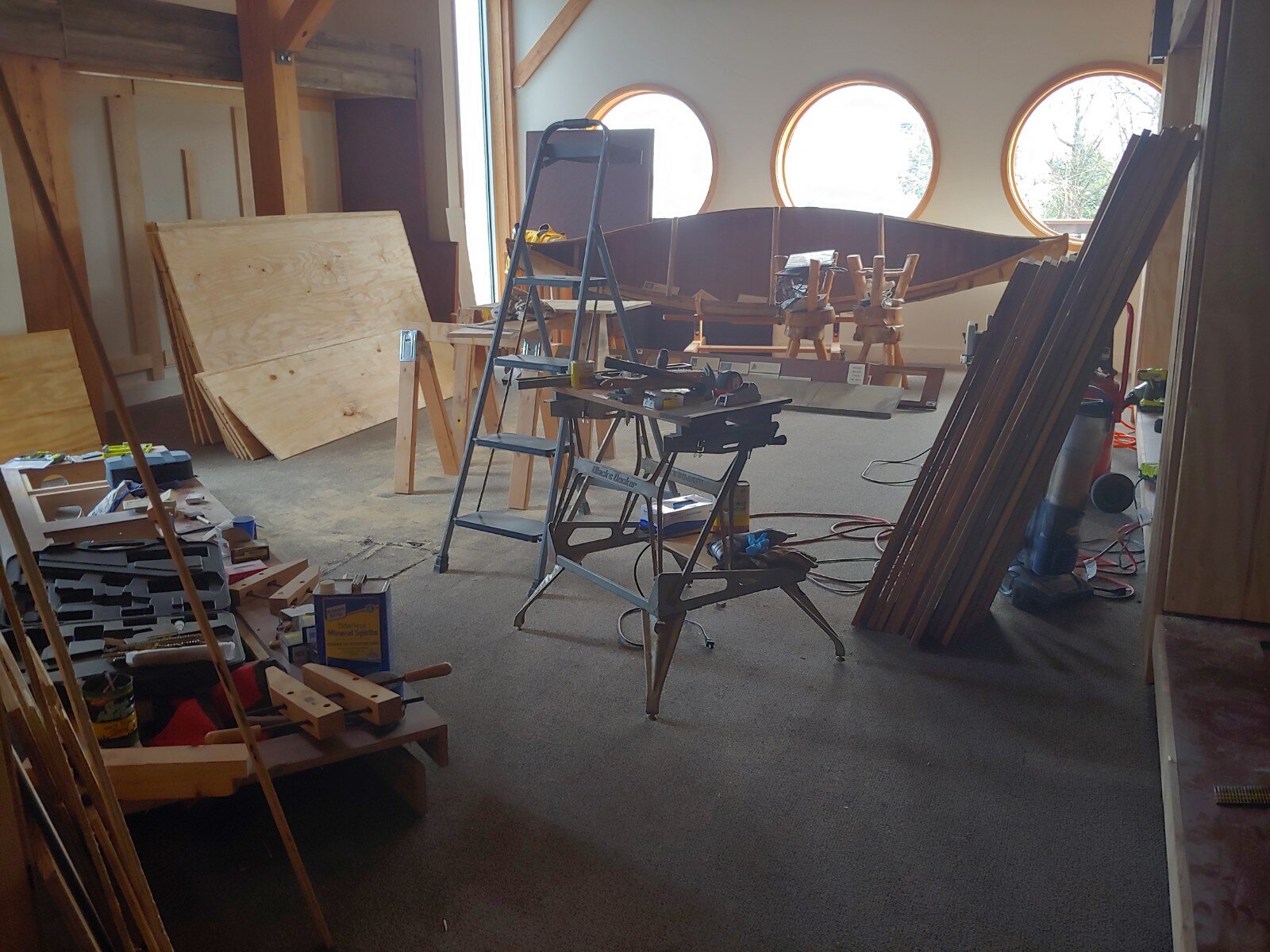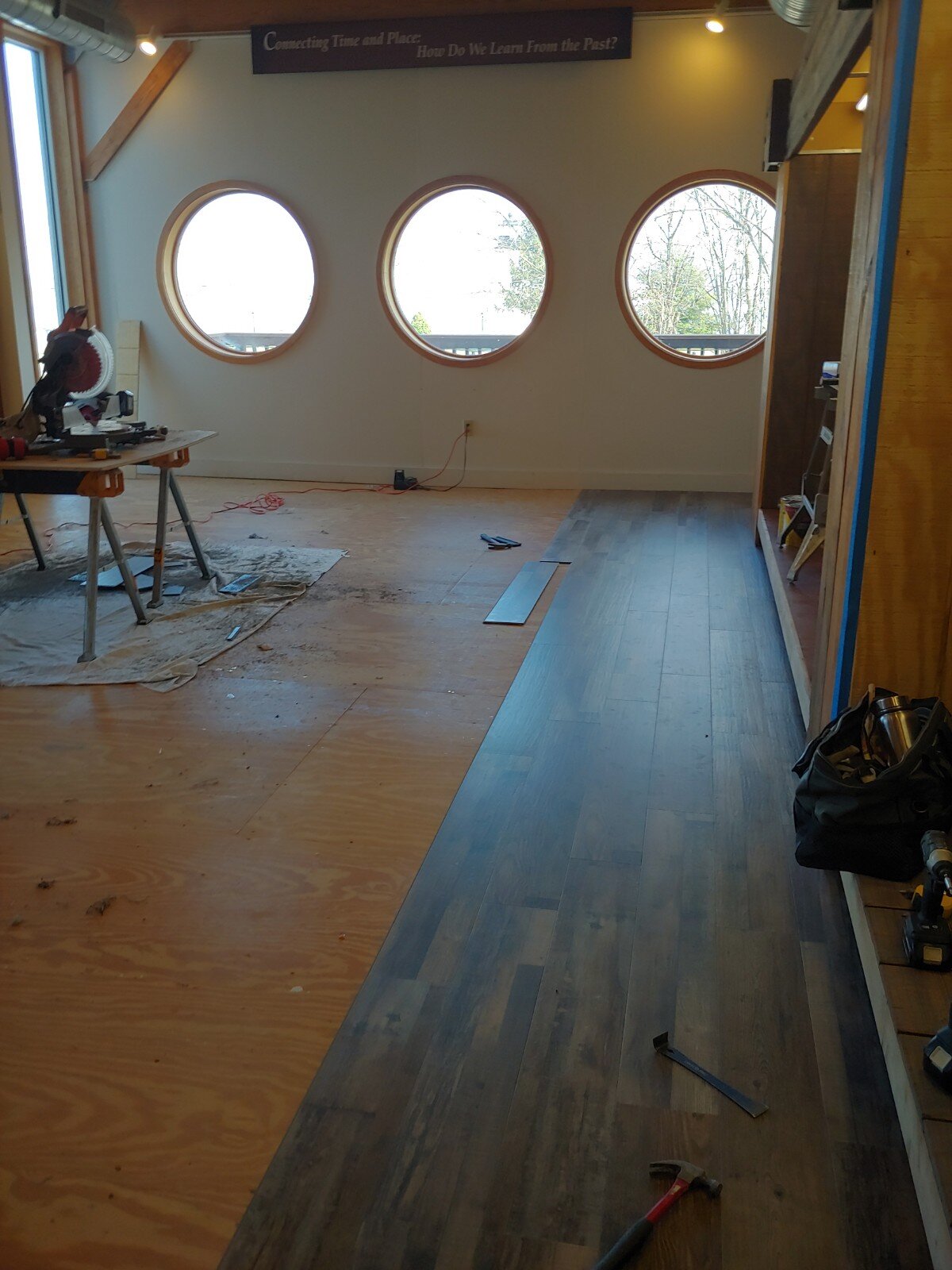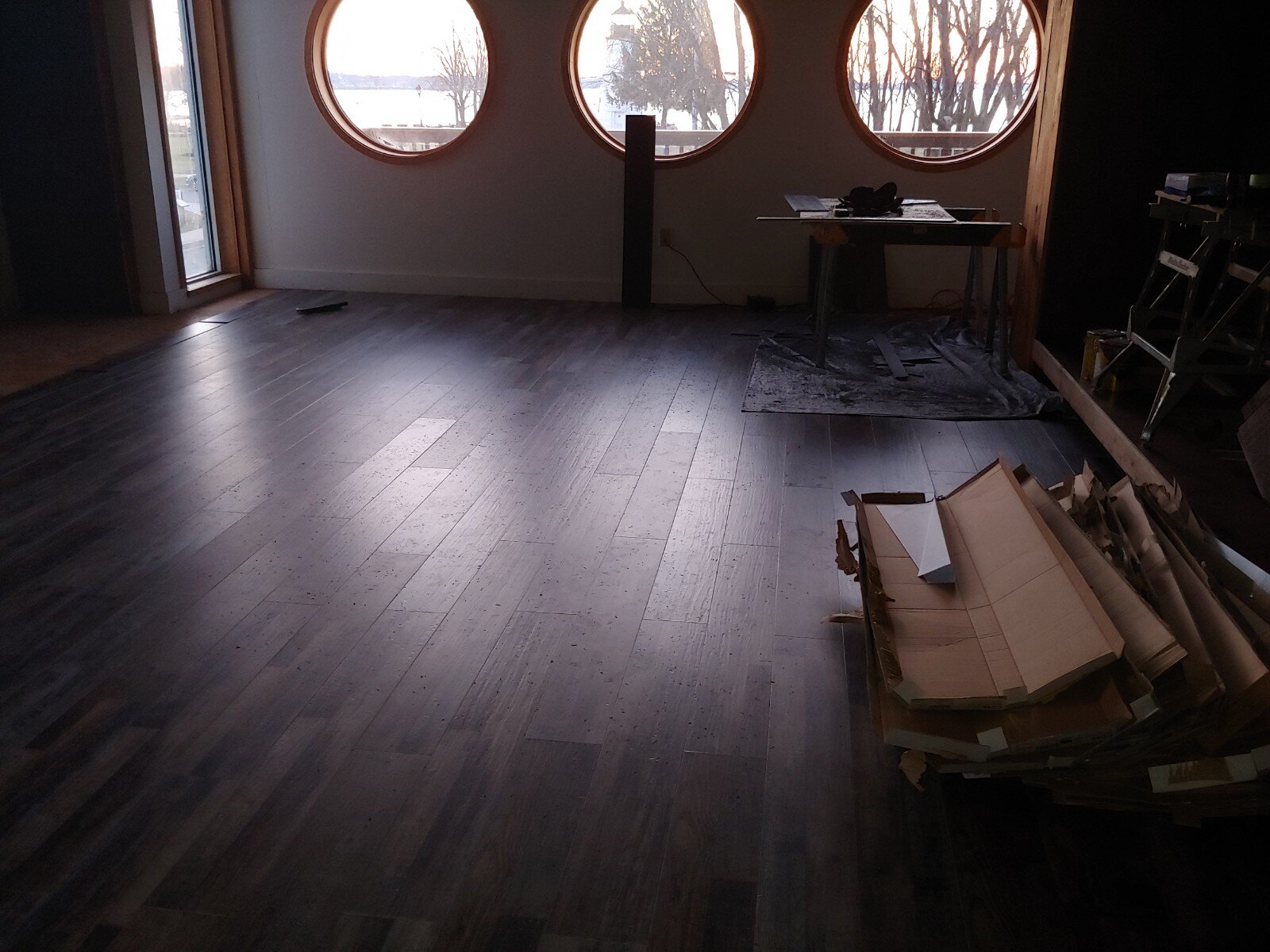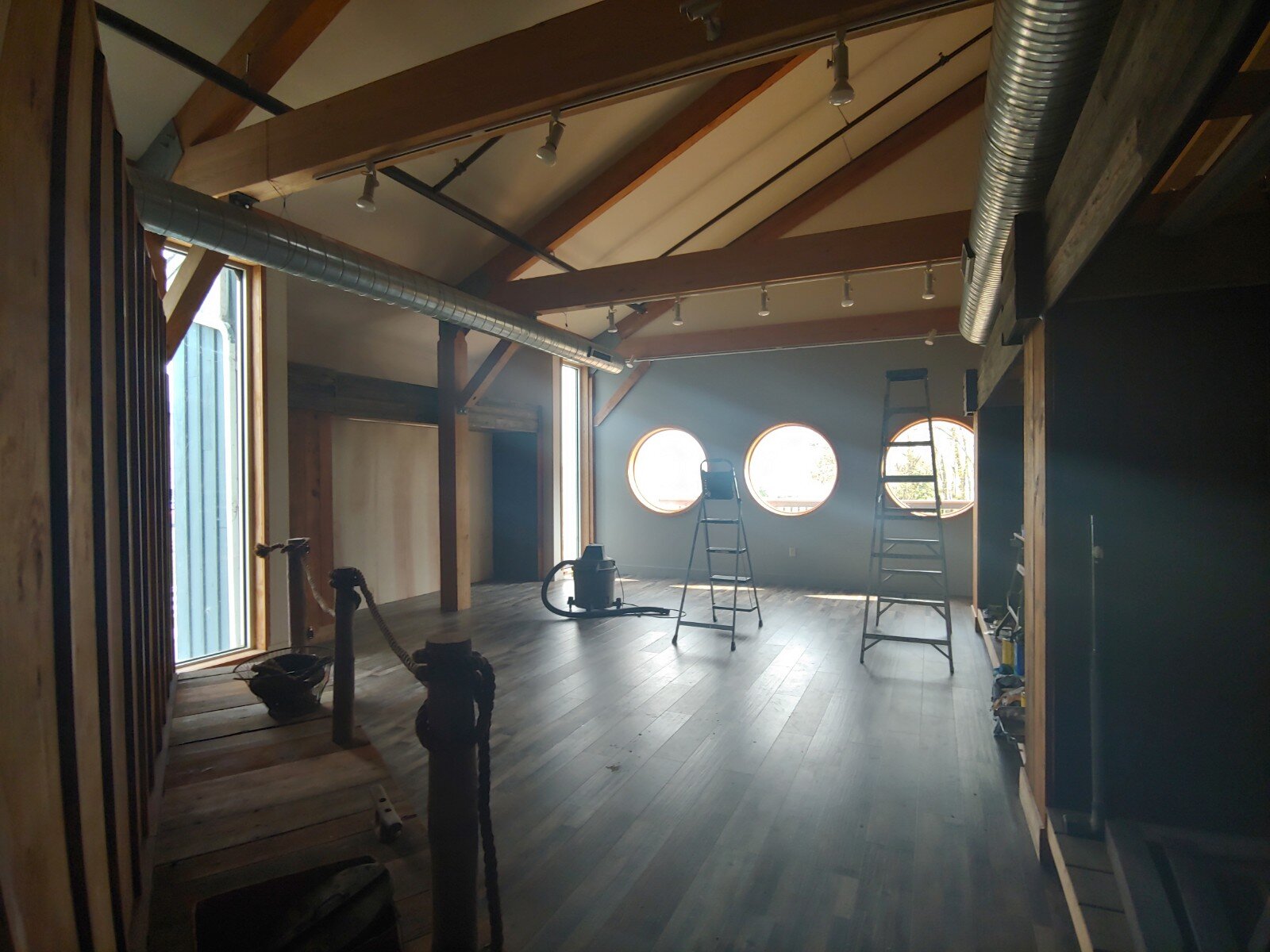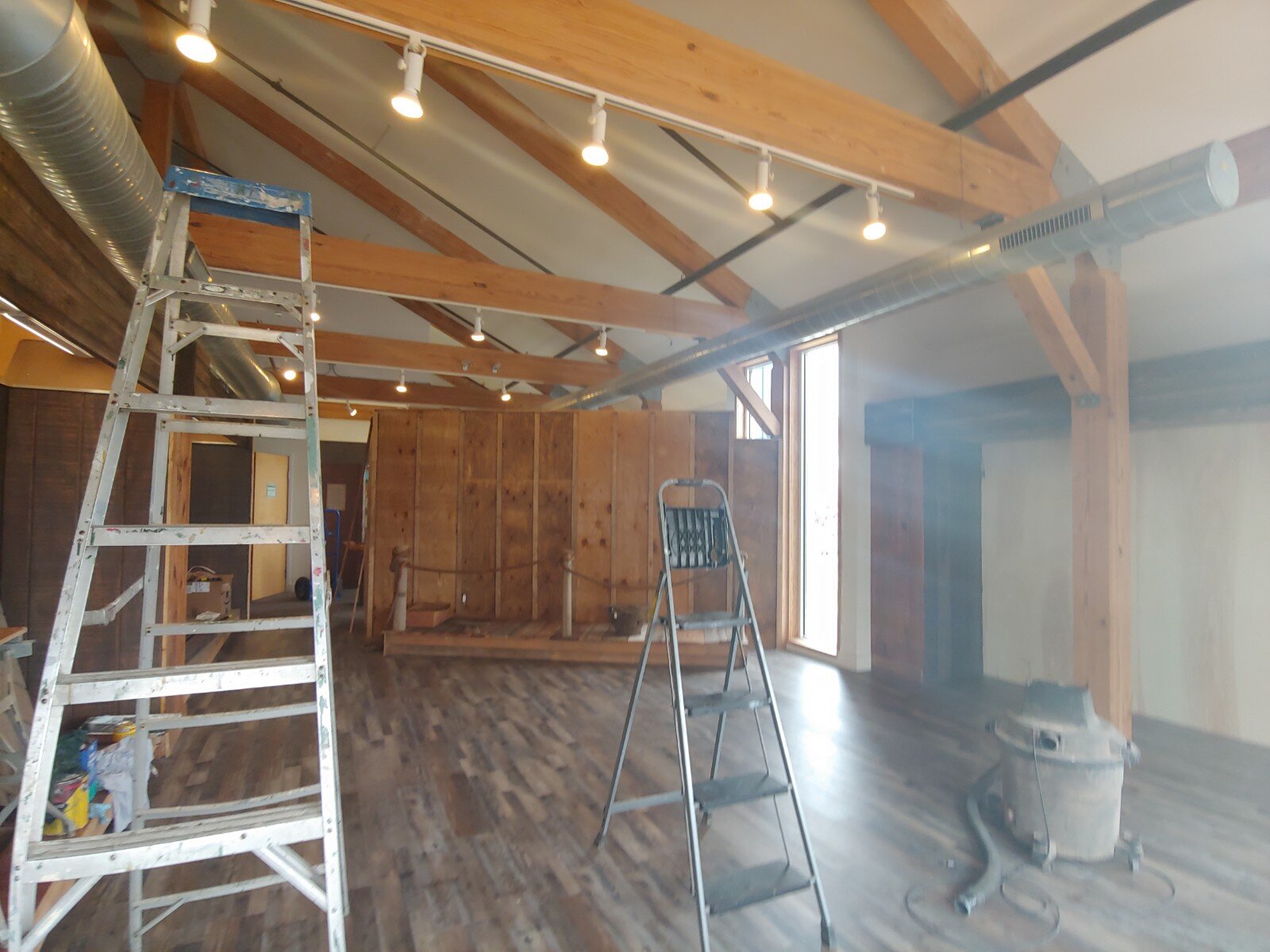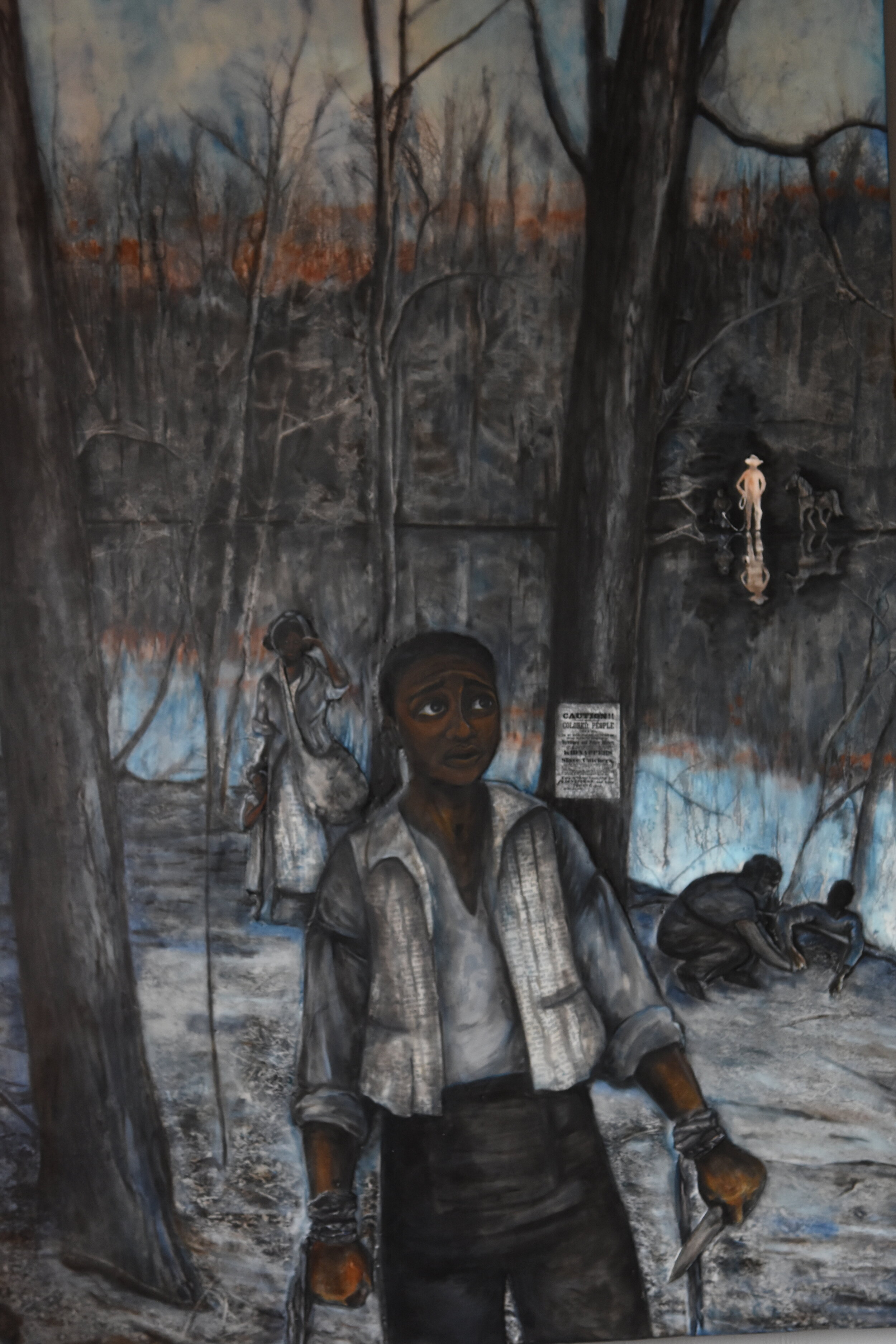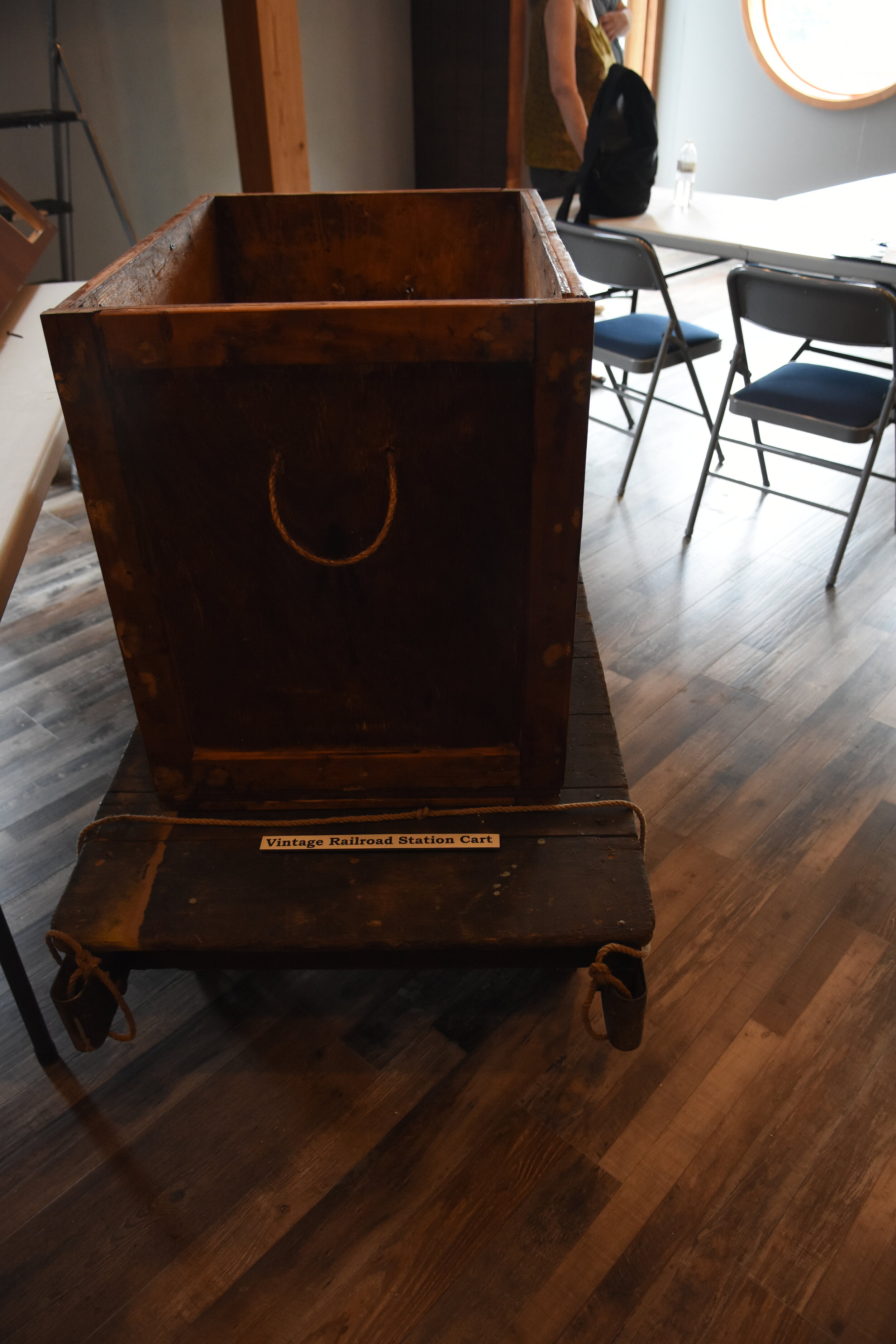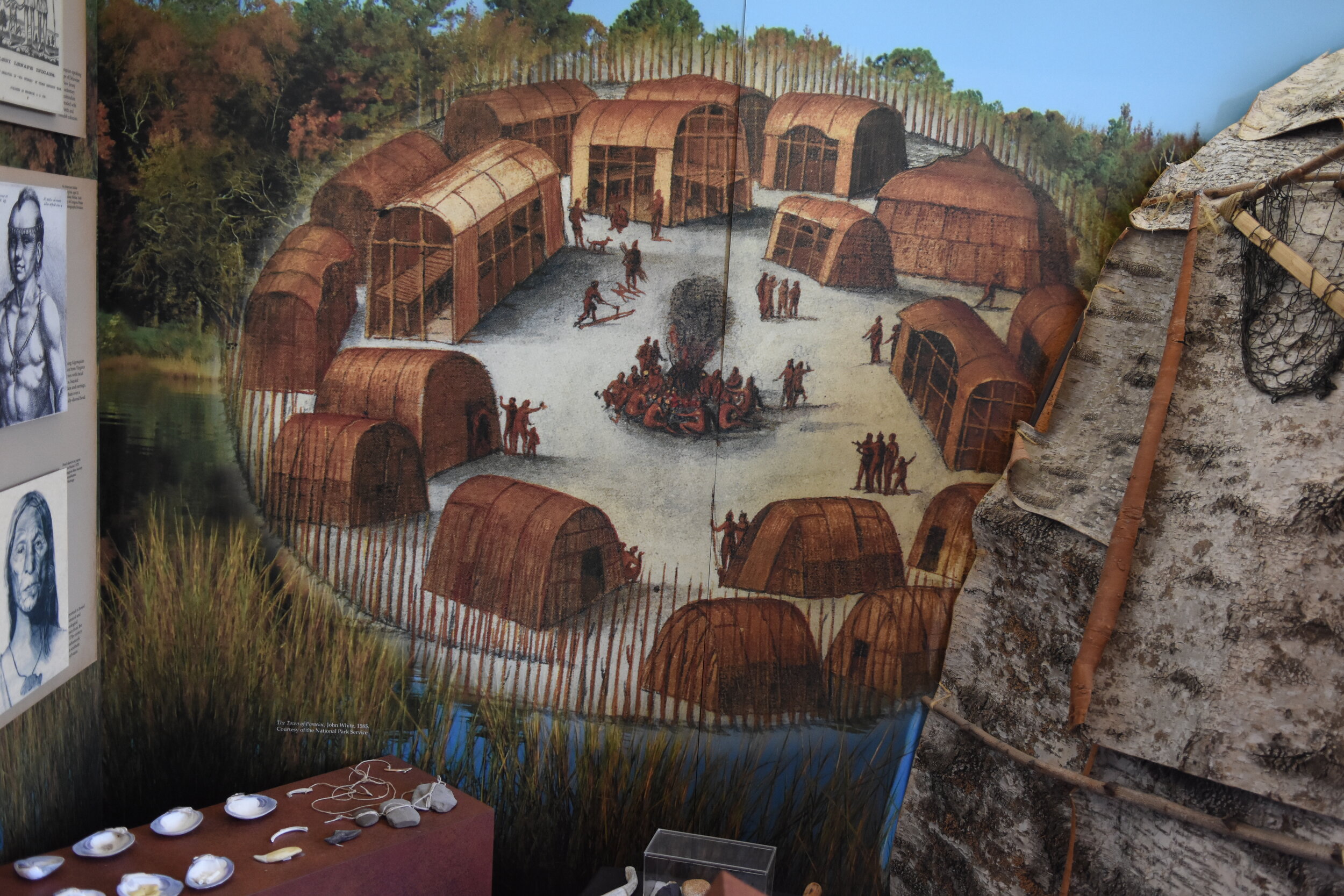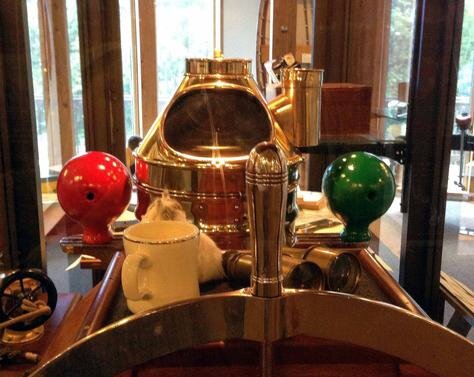Permanent Exhibits
The Underground Railroad: Other Voices of Freedom
The Havre de Grace Maritime Museum has unveiled a new 600 square foot gallery in which an interactive exhibit tells the story of the Underground Railroad in the greater Havre de Grace area, including Harford and Cecil Counties in MD north to Wrightsville, PA and around the Chesapeake Bay and Susquehanna River. Our project team exhaustively researched the history of this local section of the Underground Railroad through the unique perspective of the roles played by our waterways in the escaping slaves’ journeys, and those who assisted them along their escape to freedom.
Estuaries, rivers and creeks provided a means of transport by boat; some of the men and women who are discussed in this exhibit utilized ferries and barges as they made their way north. However, this more covert way of traveling could present challenges… Disembarking from the ferry boats and having to provide one’s manumission papers, for example. Sometimes, there was no railroad bridge or river crossing, or no way to get across, and they would need to think on their feet and keep their alibis straight. They had help along the way from “stationmasters” who operated stops along the “Railroad,” places where an escaping slave could find shelter, food, and help continuing on their way. You will find original art of these brave men and women, created by four African-American artists, supplemented by the unique exhibit layout and design that was constructed by our skilled volunteers. We encourage you to come see it for yourself.
This project is funded by the Maryland Heritage Area Authority, Lower Susquehanna Heritage Greenway, the Joseph Robert Foundation, the Harford County Cultural Arts Board, individual donations, and Museum staff and volunteers.
Current Exhibits
The John Smith Trail and the Susquehannocks
This exhibit tells the story that begins on July 24, 1608 when a crew of twelve Englishmen, under the leadership of Captain John Smith, set sail from the settlement of Jamestown, Va. on the second leg of their voyage up the Chesapeake Bay. They were strangers in a strange land, on a mission to chart the Bay, look for gold, find the fabled Northwest Passage to Asia and to establish trade networks with any Native American communities they encountered.
Step back in time, discover life in the Upper Bay 400 years ago and go Beyond Jamestown. You may be surprised at what you discover.
Working On The Bay
The Chesapeake Bay is the Nation’s largest estuary and historically has supported one of the most productive fisheries in the world. Chesapeake Bay inhabitants have harvested herring, shad, eel, oysters, crab, perch, catfish and bass. Who harvests these waters? Watermen do. They are the men and women who make a living from the Bay. Many of these men and women are passed down the skills of fishing, crabbing and oystering from previous generations in their families. On display are a variety of tools used by Watermen to harvest the Bay.
Discover how wooden workboats were made by exploring the tools used to create these boats. Take a seat on the wooden work bench and experience what it was like to create a wooden boat. Ever hear of a floating fishery? No? That’s because commercial fishing ended in the Chesapeake Bay from overfishing and from the building of the Conowingo Dam, which stopped various fish from being able to migrate up the Susquehanna River to their spawning grounds. Watermen still harvest these waters today, but they are few and far between.
Commercial Fishing
Floating fisheries once thrived on the bay. Now, commercial fishing is virtually unheard of, due to over fishing, and also from the building of the Conowingo Dam, which stopped various fish from being able to migrate up the Susquehanna River to their spawning grounds. Some watermen still harvest these waters today, but they are few and far between. Some of the fish which were primarily of interest to fishermen were bass, crappies, and shad.
These are explained in detail as part of the exhibit. Commercial fishing nets are shown. There are also replicas of various fishing boats on display in the two glass cases, with convenient booklets explaining all about each boat and what it was used for.
The Ice Harvest
Before the 1920s when industrialization created a more modern refrigerator, ice was not easily accessible as it is today. Natural ice was harvested off of frozen lakes and rivers by men and animals in order to supply the growing demand.
Havre de Grace had several ice warehouses that were used to cut, store and deliver ice to Baltimore and to its local residents. Discover how the ice business was brought to Swan Creek by William Michael and Abednego Taylor. Learn exactly how the tools were used to cut through fifteen inches of ice. Even though ice nowadays is artificial and can be made right at home, observe the difficult task of how ice was naturally harvested by working men from the 1870s to the 1910s.
United States Coast Guard
The modern-day Coast Guard was formed in 1915 after the merger of U.S. Revenue Cutter Service and the U.S. Life-Saving Service which were established in 1790 and 1878 respectively. The Revenue Cutter Service was charged with the patrol of the coast, by sea, to enforce tariffs and trade laws in order to prevent smuggling and protect the United States’ maritime interests. During the War of 1812, the Revenue Cutter Service demonstrated its capabilities as a formidable naval warfare force.
Members of the Life-Saving Service were stationed along the shore year-round patrolling along the coast land performing rescue operations for and rendering aid to crews from offshore shipwrecks. The Coast Guard is a branch of the Armed Services that during peacetime, operates under the Treasury Department and in times of war, falls under the Department of the Navy and has played a notable role in all conflicts along the United States shores since its inception.
Recreation on The Chesapeake
Havre de Grace is a great area for recreational activities on the Chesapeake Bay. From boating to fishing, the Bay offers a relaxing and fun environment. Discover the history of swimwear and recreational cruises on the Chesapeake. Browse through our collection of fishing equipment and boat motors. The recreation activities of the past are certainly present and thriving today.
Click here to view the Havre de Grace Yacht Club First Annual Regatta (August 1930) featured in this exhibit.
A Ship’s Life Saving Equipment
Before boating safety was made convenient through inflatable life jackets and plastic life rings, there were other resources used to ensure ones safety while out on the water. From the 1900s until about the 1990s, life rings and life vests were made out of cork. Even the use of plastic was not common until 1944, when life boats carried sextants onboard to help guide the mariner when using a navigation chart.
Learn all about how all ships required a certain type of equipment based on the vessel and its size. Discover how large portable marine radios were transported from the ship to the life boat, how a Lyle gun was used to save sailors and their wrecked ships and how a cork life ring with canvas pants attached to the bottom could pull a survivor out of the water. Take a swim through history and experience earlier methods of saving lives out on the open waters.
Depopulation of the Waterfowl
"No duck, no dinner" was a saying used in the past because fresh duck was utilized by everyone. From proprietors of restaurants in the cities of Baltimore, Philadelphia and New York, duck meat was shipped and served as meals to local residents. The fashion trade even jumped in on hunting various waterfowl to acquire colorful plumage for use in ladies' hats and accessories.
Bay Hunting was aided with decoys and the usage of the sink box, the punt gun, and the rollover duck hunting boat. Combined with a population of migratory birds that seemingly never depleted, human destruction of waterfowl comprised mainstream hunting on the Chesapeake Bay before new regulations for the survival of Bay birds were drafted in 1918.
Bethlehem Steel Corporation Shipbuilding Division
The Bethlehem Steel Corporation was created in 1905. It was one of the three largest shipbuilding companies in the United States. The Sparrow’s Point Shipyard was four miles long and employed over 40,000 workers by the 1950s.
Sparrow’s Point was the building grounds of the SS Bethtex and SS Venore. The SS Bethtex was captained by Arthur Eich and scrapped in 1980. It remains one of the most productive carries of its time. Models of these ships are on display in our Bethlehem Steel exhibit.
Navigation
Throughout time, ships of all kinds used some sort of method to navigate the waters. From star charts to GPS, discover the various tools for navigation of a ship. Stand at the ship’s wheel to get the Captain’s view of the binnacle. Don’t forget to look up for signal flags!
The City of Norfolk Steamship
The City of Norfolk took its final voyage on April 12, 1962, and that ended the storied history of the Old Bay Line. While being scrapped in 1966, she was struck by lightning and burned to the waterline.
Old Conowingo
The Convincing Hydroelectric Dam gave life to the city of old Conowingo. The hydroelectric dam was finished in 1928 for the Philadelphia Electric Co. The concrete dam submerged the old town in a 100-foot-deep lake that backed up thirteen miles. The new town rose in the farm fields of western Cecil County above the dam.
The Rodgers Family
History comes to life in the Rodgers Family exhibit, not just because of the pictures capturing the faces of the first family to settle in the Susquehanna Lower Ferry, but for the tangible evidence that is still present today here in Havre de Grace. Colonel John Rodgers and his wife Elizabeth immigrated to the United States from Scotland and made a living by running a tavern across the river in Perryville. The family also managed the ferry that connected to Post Road, which was the most traveled road connecting Philadelphia to Baltimore, today known as Route 7.
The Rodgers family left behind a legacy of naval heroes, who fought in wars such as the Revolutionary War, the War of 1812, and more recently, World War II. Many of the descendants came to attain high statuses such as Commodore and Captain, protecting this country in wars with the British, French, Germans, and many other countries and conflicts throughout the years.
Kids’ Corner
In the Kids’ Corner, we have a sandbox with dress-up games for our younger visitors to pretend to be pirates and sailors. The sandbox is in a boat that has been remodeled and painted in bright colors just for the Kids’ Corner. Also, there is a reading and coloring corner, where families can sit and read a book together or color, and a felt board with felt cut-outs about nature and the Bay. You will also see a blackboard that the children can draw on with chalk.
Mounted on the felt wall is our “Kitty Fish,” made entirely from recycled materials. It was featured as a float along with the Kids’ Corner boat in the 2013 Havre de Grace Fourth of July Parade, and won 2nd place.
Racing on the Chesapeake
Years ago, there were as many as ten races a year in the area. Powerboat regattas, or races, in the Chesapeake Bay region can be traced back at least as far as 1906, when a regatta on the Miles River in St. Michael’s was documented. Up until the 1950s, yacht clubs used to schedule cruises every weekend to an area regatta. Racing events spread throughout the Chesapeake region in the middle decades of the century. In Havre de Grace, races were conducted-with interruptions-from 1930 to 1990, sponsored first by the Havre de Grace Yacht Club, later by the Lions Club, and finally by the Susquehanna Optimist Club.
The Chesapeake Bays Aquatic System & Bioindex
Experience the diverse beauty of Maryland’s aquatic species in The Chesapeake Bays Aquatic System & Bioindex. Our 350 gallon freshwater tank and 150 gallon refugium mimics the environment seen rightoutside our Museum. The water cycle is represented as it moves throughout our estuary and into the Bay. Learn about other inhabitants of the Bay not seen in our live exhibits through our interactive touch screen bioindex!
Outdoor Exhibits
Our exhibits featured outside include:
Propeller from a tugboat, the Sea King
18th and 19th century sea anchors
Pollinator garden
Three 5’ x 10’ murals by Philadelphia artist Paul Santoleri
A U.S. Lighthouse Service “nun” buoy
The Boyer Family shadshack / houseboat
Large Steel Mooring Cleat
A Coast Guard bronze fog bell
Sailboat Jet 14 planer

